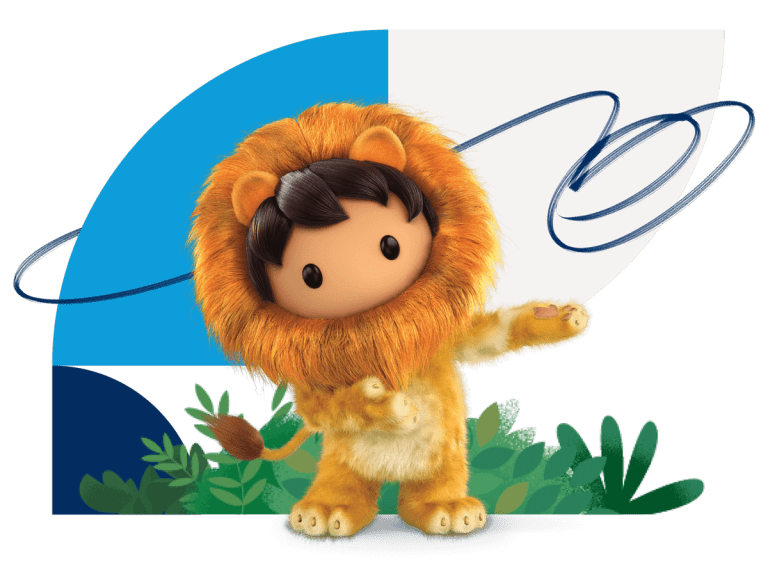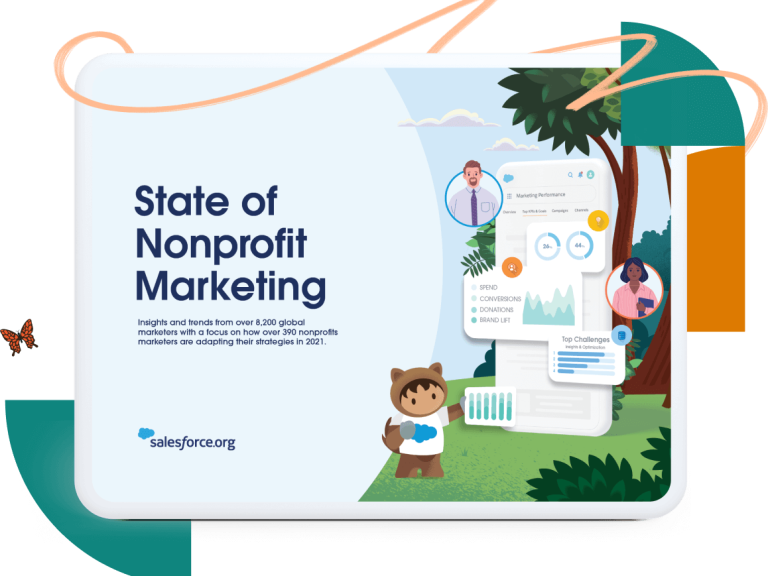The Complete Guide to Nonprofit Marketing
Marketing may seem like a corporate term, bringing to mind billboards, commercials, and ads in the “for-profit” world. These marketing tools and tactics are used by corporations to make sure consumers know that a brand exists, what it offers, and how to engage with or purchase the product. It’s critical to the success of a business – if the people who need your product don’t know about it, they can’t make any purchases and the business doesn’t succeed in its goal. So marketing is just as important for nonprofits.
What is nonprofit marketing?
Marketing is critical to the success of nonprofits in advancing their missions. Marketing for nonprofits is a way for nonprofits to identify potential supporters, make sure supporters know about all the great work a nonprofit is doing, and give them opportunities to be involved, like volunteering or donating.
Supporters expect their online interactions with nonprofits to be intuitive and highly personalized, on par with the best experiences they might have with any other brand online. Nonprofits are aware of this and are now beginning to build web destinations, data tools, and fundraising strategies to create compelling online experiences to find and connect with supporters.
Benefits of Marketing for Nonprofits
Why should nonprofits have a marketing strategy? Marketing creates a megaphone for your nonprofit organization to communicate. It is the vehicle that delivers your message.
There are many benefits for nonprofits including:
Awareness
Marketing ensures like-minded individuals are aware of your organization so they can become supporters.
Some marketing tools also create opportunities for you to become more aware of your community and, to hear what like-minded individuals are saying. Maybe your community has new, innovative ideas to support your mission or can help you spread the message of your organization within their own networks.
Fundraising
A marketing plan with well-built, highly-engaging channels creates opportunities to raise more money. You now have a way to communicate your needs as they arise to people who want to help meet those needs. You are able to set up tools to allow online donations easily and quickly. It can lead to more supporters and more resources to fund your mission.
Volunteer Support
Communicating your need for volunteers through marketing tools and strategies helps those eager to support your mission to get in touch with you. It also shows your community that you’re making an impact and that you want them involved.
Services & Impact
Many organizations provide several different types of services to their community. Maybe you offer tutoring services and have resources to provide meals to those who need them. Marketing allows you to share the message of any services you offer to the people who need them most. In this case, you could customize a message about your tutoring services to families who’ve indicated they have school aged children, creating a personalized offer. Even if your nonprofit is highly specialized, making your services known helps you to connect with individuals and entities who could benefit from what your organization provides.
Supporter Experience
There are many ways for supporters to get involved with nonprofits, whether donating, volunteering, or so much in between. But, chances are they’re not involved with your day-to-day. While they’re passionate about your mission, their participation may happen one or two days per month.
With a marketing plan built to keep supporters engaged, you’re able to keep them updated on your progress toward shared goals, what’s going on at your organization, new events, and so much more. Supporters remain engaged and aware of your organization, even if they can’t be there every day.
How to Create a Nonprofit Marketing Plan
As you start interacting on more marketing platforms with more people in new ways, you’ll find there’s a lot of content and data to sort through. Getting a marketing plan in place helps you to stay on track in reaching your specific marketing goals. So, let’s start there.
1. Define Your Marketing Goals
Are you trying to gain new supporters? Are you hoping your existing one-time donors will consider becoming recurring donors? Maybe you have an announcement about an event, and you just need to get the word out. Defining your goals upfront will help you implement the right tactics to accomplish them.
We recommend making your goals relevant, measurable, and timely. Here are some examples of goals you might have:
- We want to increase our online donations by X%.
- We’d like to acquire X number of new donors.
- We’re hoping to increase attendance to our annual gala by X%
- We’d like to convert X number of one-time donors to recurring donors.
2. Understand the Audience
Once you know your goal, define your audience. For example, if you’re hoping to convert one-time donors to recurring donors, then you know your audience is one-time donors.
To meet your goal, you might need a little more information about recurring donors, their motivations, their giving history, and maybe what made them decide to start giving regularly. Using data you have on hand will help you synthesize insights like these:
- What’s the average donation amount of your target audience?
- What types of messaging encourages these donors to give the most?
3. Create Your Message
You know your goal, and you know your audience. Remember both the text AND the visuals help you tell your story. Maybe you identified in your data that there are donors who give around the same amount each month but aren’t on a recurring giving plan. You can send a message to those donors about the convenience and the impact of setting up a recurring gift. Think about the following tips as you craft your message:
- Make sure your message is clear and focused.
- Lean in to your mission.
- Include a “Call to Action” (CTA).
4. Share Your Message
Donors are interacting with you across so many different platforms. Your message may be best suited for email, or maybe you decide an Instagram campaign about the impact of recurring giving is the best way to go. Use your audience data to make those decisions, then create the content that’s appropriate for the channel!
5. Seek Insights
Once your message has been delivered, start to gain some insights about how well it worked. Did one-time donors decide to sign-up for a recurring giving plan? If you sent the message on multiple channels, did one channel have more conversions than another? Learn about how your nonprofit marketing tools should give you these insights to make your next campaign even better and will give you a baseline for the future.
- Did we meet the goals we set?
- If not, why not? What can we change to get closer?
- Is there anything we can learn from this to apply to future campaigns?
6. Repeat!
Put those insights right back into practice. Now that you have more information, take a look at your goals. Do you want to refine your strategy or are you satisfied with your progress and want to try something new? As you gain more insights, you’ll be able to refine your goals and meet them quickly, moving you closer to impact.
Email is often seen as a primary form of digital marketing. While sometimes compared to direct mail (or offline, snail mail) email offers much more to marketers, including:
- Automations and Journeys: Consider automating and scheduling weekly, monthly, and quarterly emails to save your team time and energy.
- Real-Time Data: A good email platform will enable you to pull data, reports, and insights in real-time.
- Personalization: Use all the data you collect to target your audience with messages you know they want
- Direct Links to Action (for fundraising and volunteer sign-up): Email is a great way to send someone directly to a destination, like a donation page.
All content types (text, images, and video) can be used in this channel.
- Text should be direct, concise, and focused.
- Imagery creates a depth of experience and gives supporters a visual of your work.
It seems like there’s always a new social media platform to be involved in! Social platforms are great for engaging with your audiences, sharing what you’re up to, and listening to and interacting with your supporters. Some platforms are:
- Twitter
- Facebook
- Instagram
- Tik Tok
- And many more!
It is essential to publish social content based on your goals, audience, and brand identity. These platforms are meant for quick, engaging pieces of content – some platforms even limit the amount of text you can share. Lean into images and video on these platforms for the greatest effect.
As you are curating your own social strategy, consider conducting a competitive analysis to see how other organizations are managing their social media platforms. You can do a quick search of organizations on the platform of your choice, searching by names, keywords, or type of organization. The goal here is not to steal your competitors’ ideas – it’s to understand what type of content is working for them and how you can adapt those to your own campaigns.
Your website is your home base and can serve as a centralized location for your email and social media efforts! This is where you give an overview of your mission, share impact stories, and provide opportunities to donate and volunteer. Your website is your greatest opportunity to deeply define your mission and demonstrate how you’re addressing it, so optimizing your website is key.
- Be concise in your text.
- Be thoughtful about your visuals (this is a great opportunity for video).
- Make sure your website is mobile-friendly and accessible so it can be viewed by anyone, on any device.
- Provide clear calls-to-action on each page. What action do you want your reader to be taking?
- Build your website for search engine optimization (SEO) to increase discoverability by potential supporters.
- Make it easy for supporters to donate and contact your organization.
These are just a few examples of effective digital marketing channels for nonprofits. Other channels such as direct mail and events are also opportunities to realize all the benefits of marketing for nonprofits.
Bringing It All Together: Actionable Nonprofit Marketing Tips
Use this final section as an actionable checklist to set yourself up for success. If you’re doing these things, you’re heading in the right direction.
✓ Set Real, Measurable Goals
Goals help to define both the how and the why of what you’re doing.
- Does my goal fit my objective?
- Is my goal measurable?
- Is there a time-frame for my campaign?
- How will we measure success?
✓ Be Data-Driven
One of the biggest game-changers with online marketing is the amount of information (data) we have available to us. If captured and used correctly (with privacy in mind), data will help you to be even more connected to your mission and your supporters. You’ll know what moves the needle toward your goals. Ultimately, data will help you to be really efficient with the investment you make in your systems.
- What tools do I have? What data can I get from my current tools? Is my data actionable?
- Do my tools work together?
- Are there ways I can ensure I’m getting my data directly from my supporters?
- Do I need to collect new or different data to effectively engage my supporters?
✓ Personalized Content
Content that isn’t personalized is the first to be ignored, deleted, or relegated to the spam folder (and it’s very hard to get out once you’re in there). With data, you can deploy personalized content so that you know your supporters are getting the messages that are most likely to engage them.
- Is everyone getting the same message, or are we segmenting at all?
- What are new ways we could personalize beyond adding names to emails?
- Do we have enough preference data to personalize, or do we need to revisit what data we capture?
✓ Stay Active & Connected
Participate in social movements as they are happening, especially those related to your mission. Try new things (like new social channels!) This shows your supporters that you’re looking outward to make sure your mission extends beyond your four walls.
- Do you have a plan for staying up-to-date on current events so that you can participate where it’s relevant to your mission?
- What new marketing technique, platform, or channel have you tried in the last 6 weeks? How did it go?
✓ Be Authentic
This is so important. Be honest with your supporters. Allow your mission to show up in everything you do, no matter the content type, the channel, or the strategy.
- Are you sharing real, actual needs with your supporters?
- What is non-negotiable? (i.e. We always have a Thanksgiving campaign because our organization seeks to solve food insecurity).
Marketing isn’t just for corporations: it’s a key component to the success of nonprofits. Use all the tools you have to reach new people with the message of your mission, get them involved, and keep them engaged with ongoing communications that share the best of who you are and what you’re doing to make a real impact.




